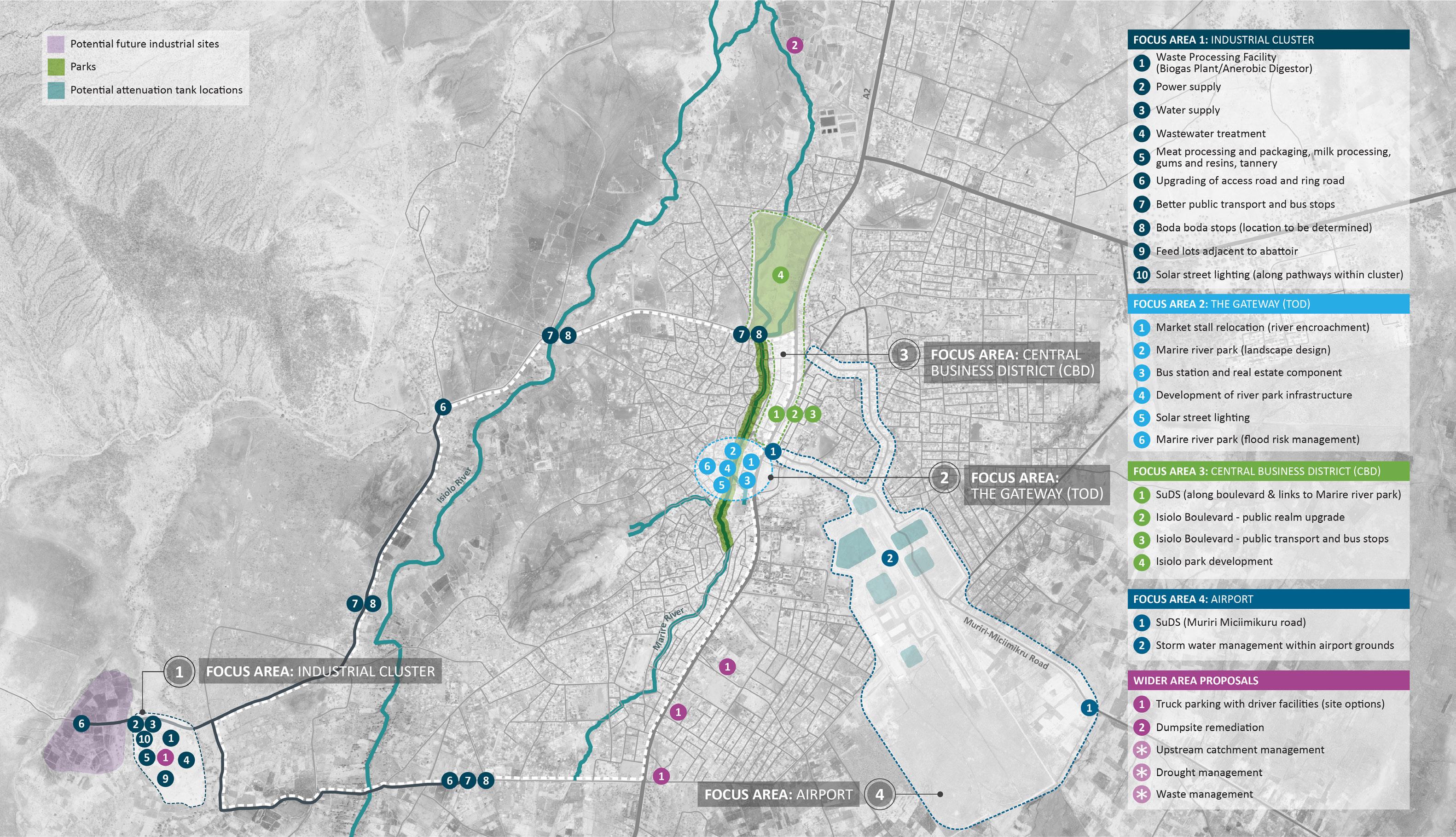25
ISIOLO URBAN ECONOMIC PLAN
3.2. Economic Sector Action Plans Having identified the three key sectors for further assessment (see page 22) the Economic Development Plan has formulated the following Action Plans for each sector. These are premised on the Strengths, Weaknesses, Opportunities and Threats (SWOT) analysis that was part of the Diagnostics Reporting stage (Appendix A). Summaries of the SWOTs are presented below for each sector (with strengths, weaknesses and challenges).
Agriculture and Livestock Sector
Isiolo County also produces some processed agriculture products. The County does not have an optimal climate for growing many agricultural products, with 80% of the land non-arable, however it is well suited to grow the raw materials for
gums, resins and aloe products, which are then further processed within the County and the wider region. Vision 2030 and the Medium Term Plan (MTP III) both identify increasing
the productivity of livestock with new opportunities for processing and value addition as key goals for the future of Kenya.
SWOT Analysis Summary for Agriculture and Livestock Sector
Strengths Thriving camel milk industry, with distribution to Nairobi. Existing processing of aloe, gums and resins.
The livestock sector is described as the “backbone of the County’s economy”, with over 80% of the population reliant on the livestock sector for their livelihood. Only 26% practice agro-pastoralism due to poor environmental conditions, including drought and high temperatures, this increases the reliance of the economy on the livestock sector. The sector is crucial to a large share of the population’s livelihood, though it makes a smaller contribution to the County’s GCP (21%) and represents low value addition and productivity.
Abundant land availability for livestock.
Improving the livestock sector in Isiolo will have wide reaching benefits for the County, and there is strong potential for value chain opportunities such as camel milk and meat processing which utilise local products and natural resources better, as well as the upstream activities in transportation, process and trading.
Challenges to address
Weaknesses Good endowment of livestock, with strong community traditions.
Lack of marketing, packaging and branding of produce.
Farmers lack knowledge on livestock production best practices.
Presence of modern livestock market in Isiolo town centre.
Lack of equipment and facilities, including cold storage and production technologies.
Good road linkages to the north and south of Isiolo (A2).
Uncontrolled livestock diseases and lack of safe water for livestock. Livestock productivity is poor and output is low value, whilst prices are fluctuate. Poor marketing and market information, with lacking supply chain infrastructure. Poor management and lack of holding/fattening pens for livestock. A local culture of patriarchy, women are neglected from business decisions. Negative views on PWDs, they are not seen as capable for work in this sector.
Environment of violence and conflict, due to land grabbing and encroachment. Vulnerability to drought, unpredictable rainfall and floods resulting in soil erosion.
Lack of access to credit, where farmers are unable to expand operations.
Overreliance on livestock sector, due to being in an ASAL region, with limited suitable land for growing crops (as output and feed).
Water scarcity, with drought a critical risk to production capability.
Workforce population may decline further in rural areas. Continued exclusion of certain groups from employment and business opportunities.








